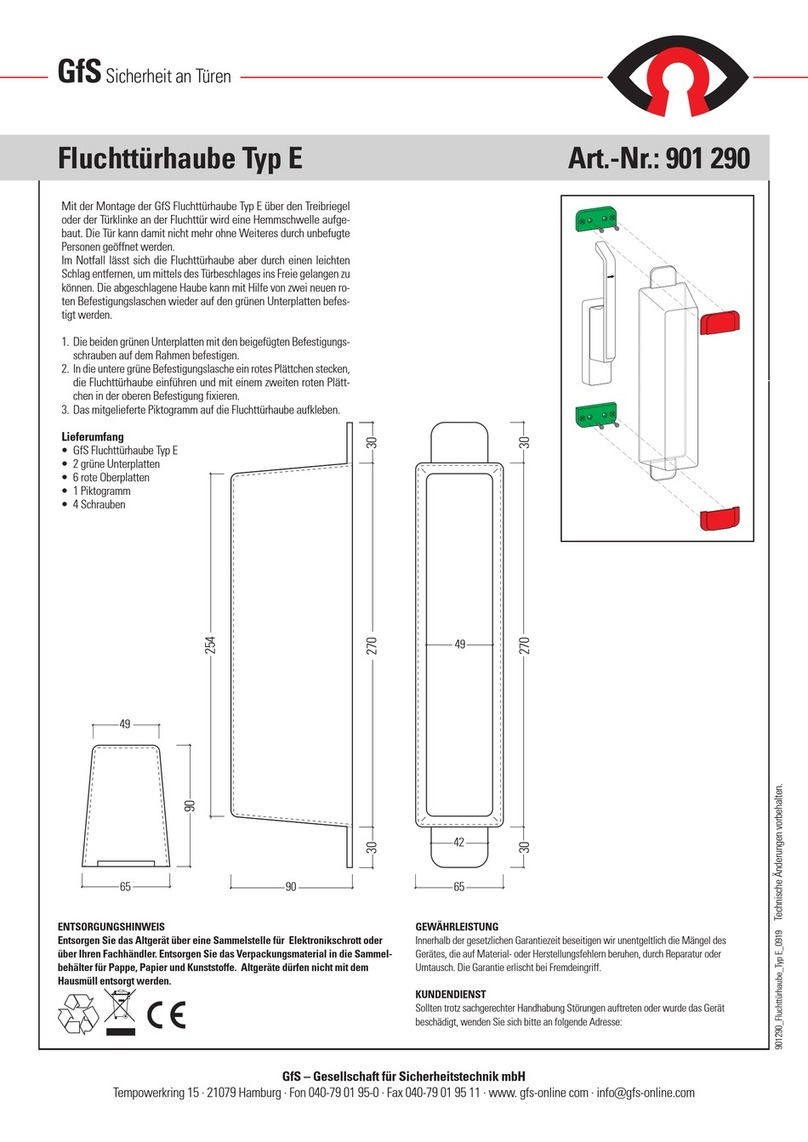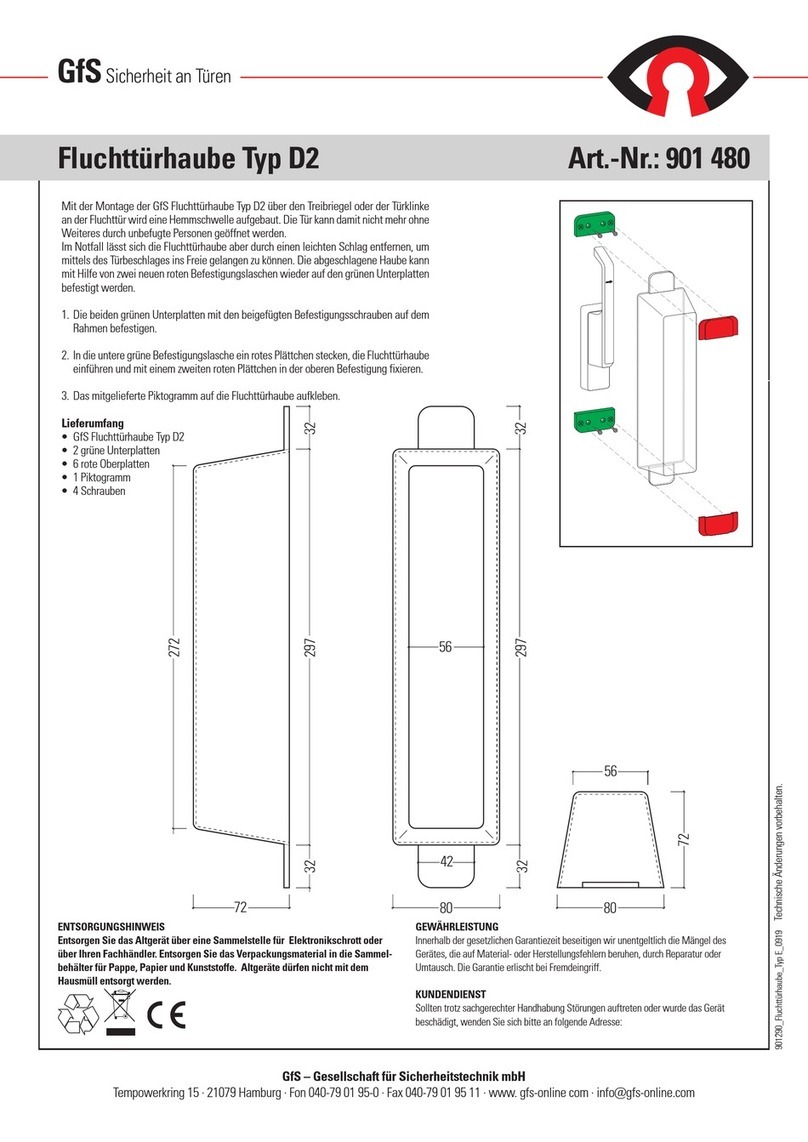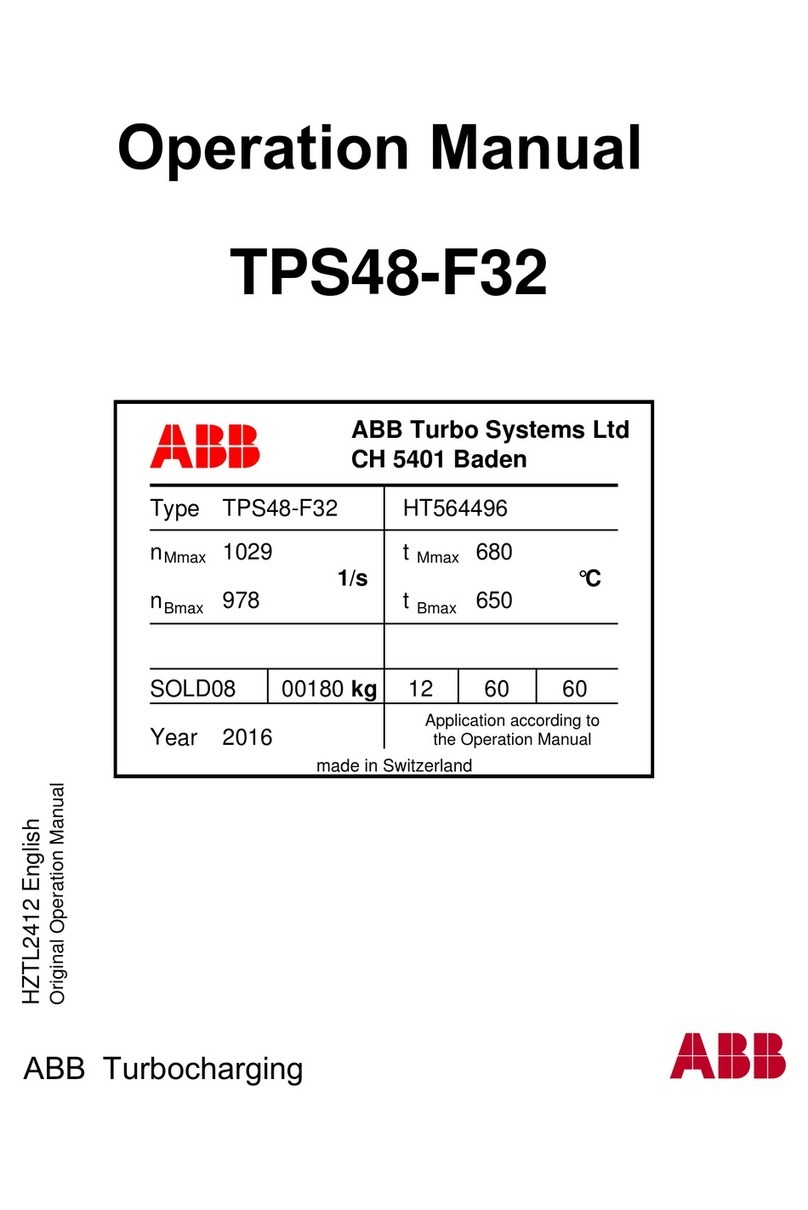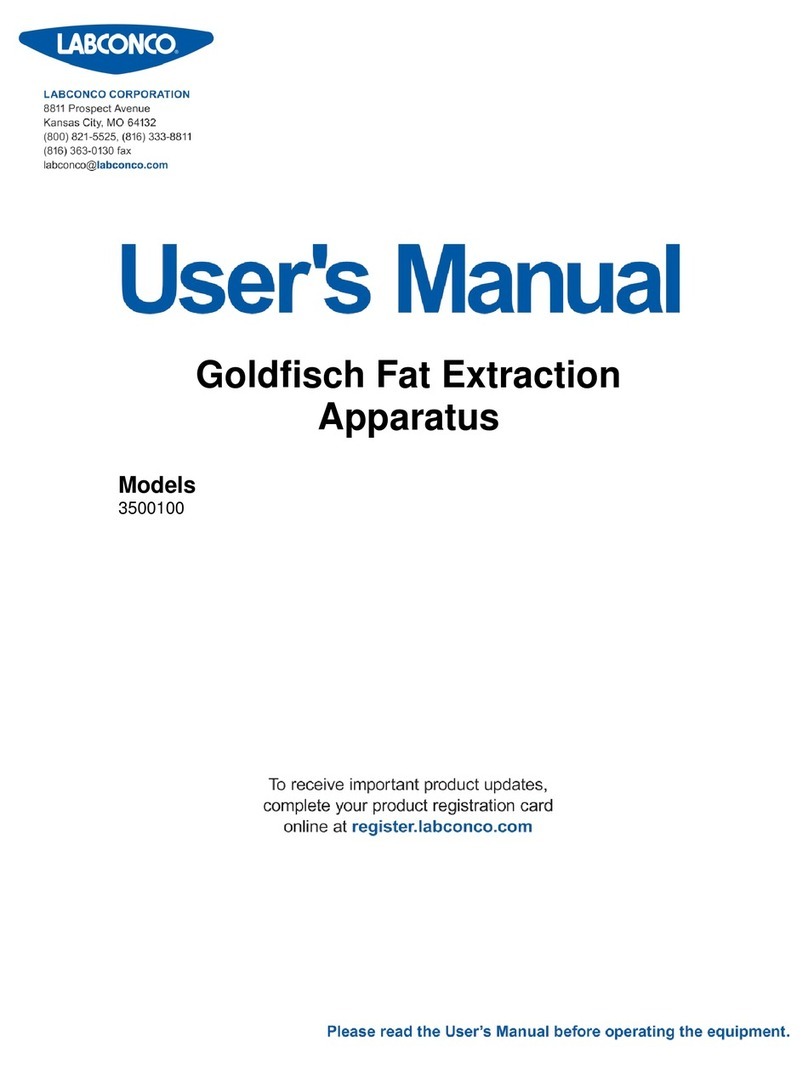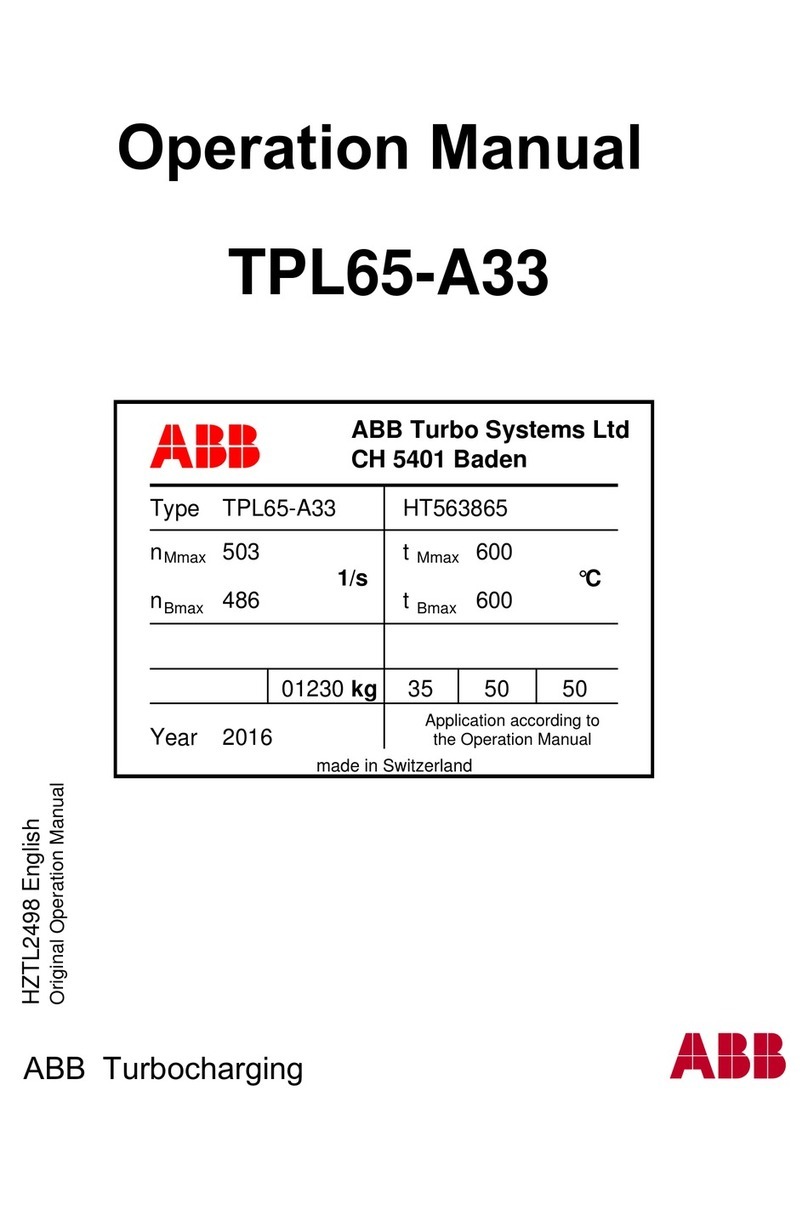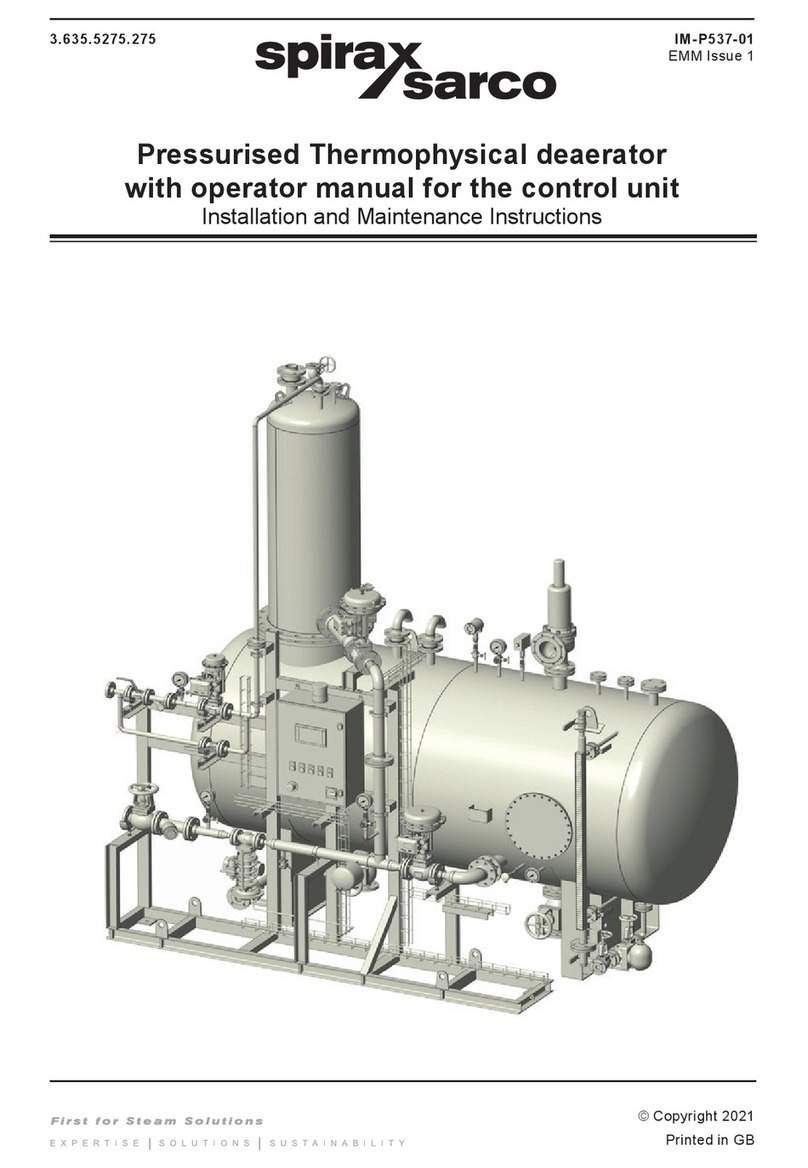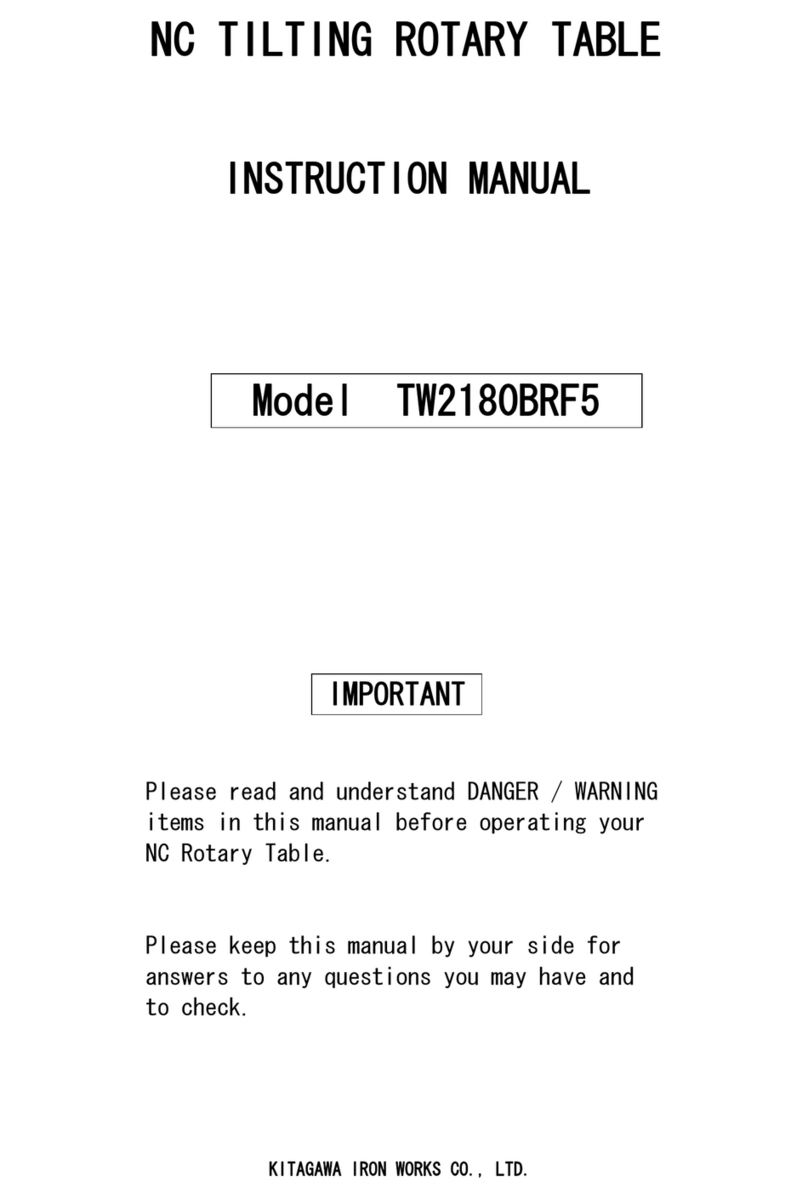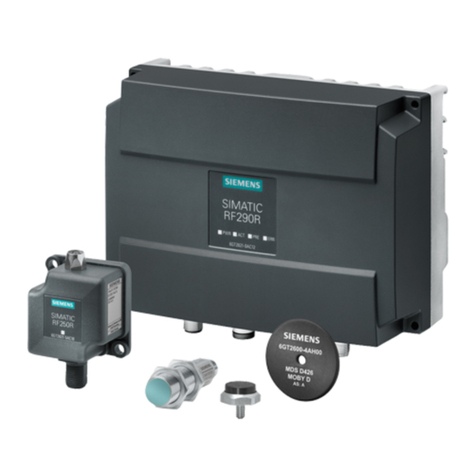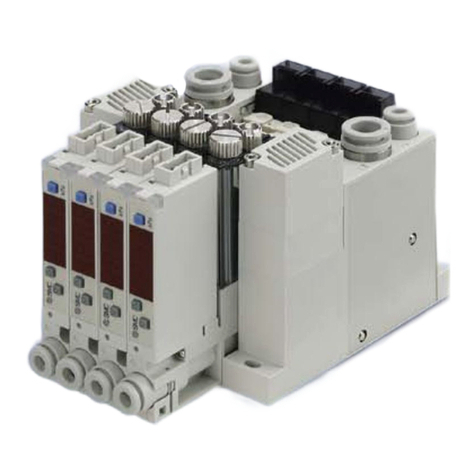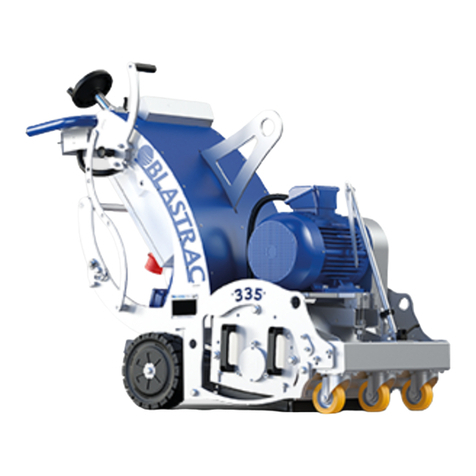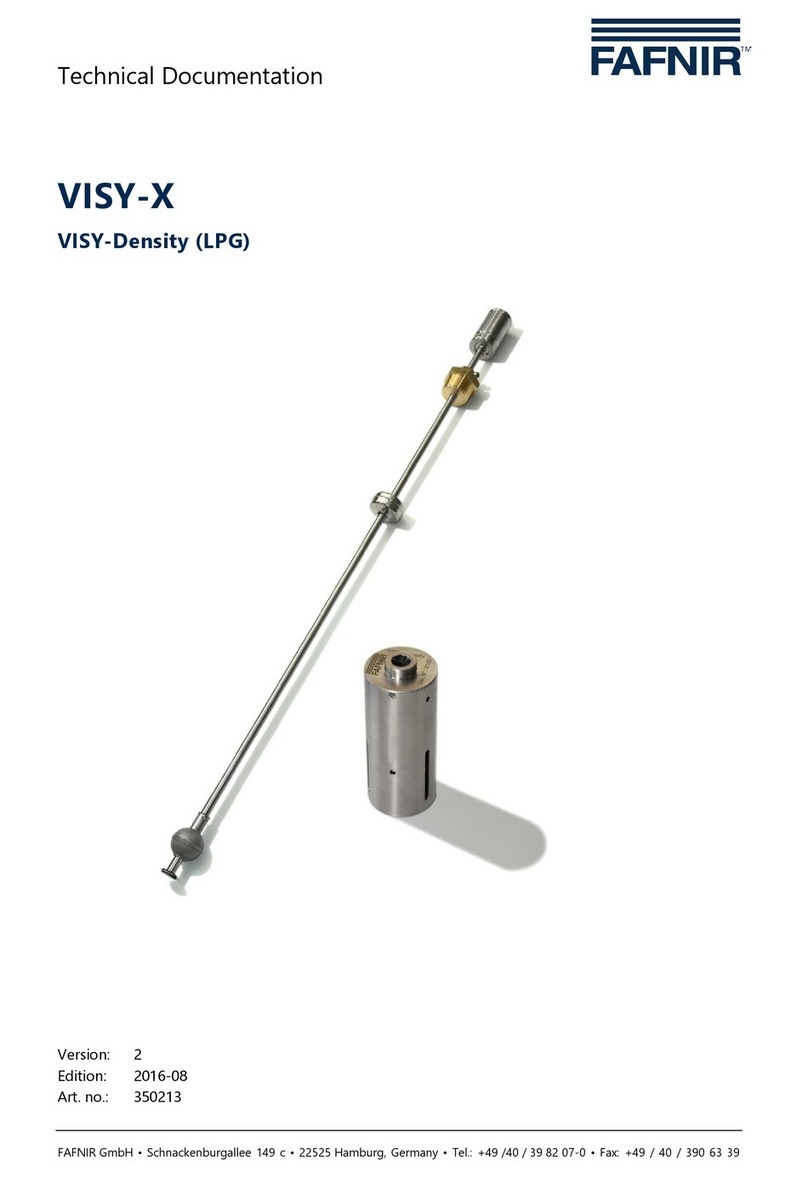GFS Ultra XP1 User manual

Automotive Refinish Paint Booths
Service & Operations Manual
Document Number: 239-062 rev 5
Publication date 12/07/2020
Read and keep this manual for future reference. All personnel operating the equipment described in this manual should review and understand
all instructions before use.

Table of Contents
Introduction ............................................................................................................................................ 4
About Global Finishing Solutions LLC .............................................................................................. 4
Contacting Global Finishing Solutions .............................................................................................. 4
Target audience .............................................................................................................................. 4
Conventions used in this manual ...................................................................................................... 5
Safety notices ......................................................................................................................... 5
Information notices ................................................................................................................. 5
General safety ........................................................................................................................................ 6
Booth safety ........................................................................................................................................... 8
Safety features ..................................................................................................................................... 10
Booth Overview .................................................................................................................................... 11
Air management ........................................................................................................................... 11
Air velocity ............................................................................................................................ 11
Downdraft airflow .................................................................................................................. 11
Semi-downdraft airflow .......................................................................................................... 12
Air pressure balance ............................................................................................................. 12
Booth components ........................................................................................................................ 13
Doors ................................................................................................................................... 13
Curtains ............................................................................................................................... 13
Filters ................................................................................................................................... 13
Exhaust fan(s) ...................................................................................................................... 14
Lighting ................................................................................................................................ 14
Operator interface terminal .................................................................................................... 14
Service and maintenance ...................................................................................................................... 15
Maintenance schedule .................................................................................................................. 15
Daily maintenance ........................................................................................................................ 16
Inspect filters and replace as needed ..................................................................................... 16
Remove overspray buildup .................................................................................................... 24
Check operation of product doors .......................................................................................... 25
Check lights ......................................................................................................................... 25
Monthly maintenance .................................................................................................................... 26
Clean booth components ....................................................................................................... 26
Inspect and clean the air heater ............................................................................................. 27
Inspect and clean the exhaust fan .......................................................................................... 27
Yearly maintenance ....................................................................................................................... 29
If applicable: Inspect and clean an air heater with a standard burner ........................................ 29
If applicable: Inspect and clean an air heater with a Low NOx burner ....................................... 30
If applicable: Inspect the cycle damper (BT and GUL) ............................................................. 31
If applicable: Inspect the recirc and intake air dampers (SpaceSaver) ....................................... 31
If applicable: Test for valve leaks ............................................................................................ 31
If applicable: Check the gas pressure switches ....................................................................... 33
General service procedures ........................................................................................................... 36
Replace a defective bulb ....................................................................................................... 36
Replace the protective light covering ...................................................................................... 36
Global Finishing Solutions 2 239-062 rev 5

Adjust belt tension ................................................................................................................ 38
Replace fan belts .................................................................................................................. 39
Check V-belt drive alignment ................................................................................................. 39
V-belt drive considerations ..................................................................................................... 41
Replace fan bearings (SpaceSaver) ....................................................................................... 41
Common causes of excessive vibration .................................................................................. 41
Air heater service procedures ........................................................................................................ 42
Check air heater belt tension (SpaceSaver) ............................................................................ 42
Reset the air heater flame safety control ................................................................................. 43
Reset the gas pressure switches ............................................................................................ 43
Reset the high temperature limit switch .................................................................................. 43
Spare parts and accessories ................................................................................................................. 44
Consumable parts ........................................................................................................................ 44
Accessories .................................................................................................................................. 45
Control panel ........................................................................................................................................ 49
Global Finishing Solutions 3 239-062 rev 5

Introduction
About Global Finishing Solutions LLC
Leading the Industry in Paint Booth and Finishing System Technology
With decades of experience, Global Finishing Solutions is the leading manufacturer of paint booths and
finishing systems for many industries, including automotive refinish, aerospace and defense, industrial
manufacturing, woodworking, and large equipment. By combining high-quality components, strong
relationships with paint manufacturers, and our experienced distribution network, GFS provides the best
equipment and support to set your business up for success.
Contacting Global Finishing Solutions
General information
• Toll-free: 800-848-8738
• Fax: 715-597-2193
• Online: www.globalfinishing.com
Technical support
• Toll-free: 800-848-8738
• Fax: 715-597-8818
Parts and filters
• Toll-free: 800-848-8738
• Fax: 888-338-4584
Target audience
This document is intended for use by trained, experienced paint booth installers and maintenance
technicians. If you have questions about the installation procedure described in this manual, contact GFS
as described above.
Introduction
Global Finishing Solutions 4 239-062 rev 5

Conventions used in this manual
This section describes how information is presented, organized, and referenced within this manual.
Safety notices
This manual uses the following standards to identify conditions related to safety hazards and equipment
damage.
Table 1. Safety notices
Symbol Description
DANGER Indicates an imminent hazard that will result in death.
WARNING Indicates a hazard that can result in serious personal injury or death.
CAUTION Indicates a hazard that can result in personal injury.
NOTICE Indicates a situation that can result in equipment or property damage, but poses no risk
of personal injury.
Information notices
In addition to the safety notices described above, this manual uses a boldface keyword to identify certain
other types of information.
Table 2. Information notices
Keyword Description
NOTE Denotes general information that provides additional context or guidance.
Important Denotes information to which you should pay special attention.
Reference Directs you to related content in a separate document.
Prerequisites Specifies other tasks that must be completed or conditions that must exist before you
perform the current task.
Scope Describes limitations to the current task or conditions under which the task applies or
does not apply to the procedure.
Introduction
Global Finishing Solutions 5 239-062 rev 5

General safety
Follow all safety guidelines when assembling, operating, or servicing this product.
WARNING
There are inherent hazards associated with the operation and service of this equipment. For your personal
safety, observe all safety information. Failure to observe these safety practices can result in personal injury
or death.
WARNING
Operation and maintenance of this product must be performed properly by qualified personnel who observe
the warnings in all documentation and notes provided with and on the product.
WARNING
Follow all general standards for installation and safety for work on installations. Follow all good practices for
the proper use of lifting tackle and equipment. The use of protective equipment such as safety goggles and
protective footwear must be considered.
WARNING
All persons who will operate, service, inspect, or otherwise handle this product must read and understand
the safe operating practices, safety precautions, and warning messages in this documentation.
WARNING
Comply with OSHA guidelines and with all applicable local electrical, safety, and fire codes and standards.
WARNING
All field wiring provided must comply with local codes or, in the absence of local codes, the National
Electrical Code (NFPA 70). Article 516 covers applicable of flammable and combustible materials.
WARNING
Electrical installation should be completed by a qualified electrician. Installation must meet all applicable
national, state, and local electrical codes.
WARNING
Ensure that all electrical components are grounded to a central ground.
WARNING
Disconnect and lock out the main electrical service before installing, adjusting, or servicing the product.
WARNING
Lockout the main gas shutoff valve before maintenance or inspection of the air heater.
WARNING
Guards and covers that prevent contact with electrically energized or moving parts are required and must
not be removed or left open during operation.
General safety
Global Finishing Solutions 6 239-062 rev 5

WARNING
Local fire and building codes require fire protection. Check with local inspector authorities for requirements.
CAUTION
Read and save these instructions before attempting to assemble, install, operate, or maintain the product
described. Protect yourself and others by observing all safety information. Failure to comply with
instructions could result in personal injury and/or property damage. Retain these instructions for future
reference.
CAUTION
This manual contains statements that relate to worker safety. Read this manual thoroughly and comply as
directed. Operate this equipment in accordance with the guidelines set forth in this manual. It is impossible
to list all potential hazards of this equipment. Instruct all personnel involved with this equipment in the safe
conduct and operation of the system. GFS recommends that only qualified personnel operate and maintain
this equipment.
CAUTION
Safety signs, panels, and labels that are normally affixed to the product must be replaced immediately if
illegible or missing.
CAUTION
New or replacement parts that are installed during repair or maintenance must include all safety signs,
panels, and labels as specified by the manufacturer. These must be affixed to the new or replacement parts
as specified by the manufacturer.
CAUTION
Where applicable, use earplugs or take other safety measures for hearing protection.
NOTICE
The product must be installed and serviced only by a trained, qualified service technician. Incorrect
installation may void the warranty.
NOTICE
If you have questions about the warranty, please contact your distributor prior to contacting GFS.
General safety
Global Finishing Solutions 7 239-062 rev 5

Booth safety
DANGER
Ceiling panel load capacity for installation and maintenance: You must use temporary platforms that
span at least two structural frames for maintenance. Do not walk on or apply any pressure to lights or
explosion (deflagration) relief panels.
WARNING
All equipment must be operated and maintained in accordance with local, state, and federal (OSHA)
requirements governing occupational safety, fire protection, and booth operations. Operators must read and
understand GFS and included independent equipment and/or component manufacturer's instructions prior
to use. Disclaimer: GFS is not responsible for any injury, illness, or property damage that results from not
abiding by local, state, or federal (OSHA) requirements that govern occupational safety, fire protection,
spray booth, and oven operations. GFS is also not responsible for any injury, illness, or property damage
that is the result of not adhering to GFS and/or independent equipment/component operating, service,
maintenance, and/or installation requirement's or directives.
WARNING
Do not allow overspray to accumulate on the inside of the paint booth walls. When overspray accumulates,
remove it as soon as possible to prevent a possible fire hazard. Use a non-ferrous, non-sparking scraper to
eliminate any possibilities of igniting combustible material.
WARNING
Do not leave piles of paint sweepings in the booth as it creates a possible fire hazard.
WARNING
Treat used filters and any other paint-contaminated items as flammable products and dispose of them
safely.
WARNING
If coatings containing nitrocellulose are sprayed in the booth, all residue must be removed from exhaust
diffuser components and all exhaust filters must be changed at least once a day.
WARNING
Improper disposal of used filters may cause spontaneous combustion. You must consult local authorities for
proper storage and disposal requirements. Guidelines include:
• Immediately remove all filters from the booth.
• Discard filters to a safe, detached location, place them in a non-combustible container with tight-fitting lid,
or place them in a water-filled metal container to prevent a possible fire hazard.
• Disposal varies depending on the type of paint that is being captured. Consult local authorities for storage
and disposal requirements.
WARNING
Duct the exhaust air from the fan away from the working environment to the outdoors. Do not operate the
booth unless exhaust has been ducted properly.
Booth safety
Global Finishing Solutions 8 239-062 rev 5

WARNING
Isolate the outdoor vent from air-conditioning intakes, windows, and any other equipment that may re-
circulate the exhaust indoors.
WARNING
Turn on the exhaust fan before using the spray booth. Ensure that the exhaust fan is operating correctly
before entering the booth.
WARNING
Check local codes to see if a booth interlock is required. A booth interlock prevents the spray devices from
operating unless the booth fan is operating.
WARNING
Some spray activities may require the use of respiratory protection.
WARNING
Use an OSHA-approved paint spray respirator when spraying in the booth.
WARNING
This equipment is designed for the removal of particulate matter only. Reduction of volatile organic
compounds (VOCs) requires either coating reformulation or optional, additional equipment.
WARNING
Fall Hazard: Do not walk or drive over the pit without the bar grating in place.
WARNING
Fall Hazard: Do not drive over the bar grating in a vehicle that exceeds the maximum wheel load listed in
the Bar Grating Specification table on the Pit Details page of the Design Drawings.
WARNING
Fall Hazard: Do not remove bar grating from the pit unless authorized to do so. The pit presents a fall
hazard when the bar grating is not installed.
CAUTION
Become familiar with all controls before operating or servicing this booth.
CAUTION
Proper door alignment is critical to the operation of the booth. Ensure that there is equal space around the
doors. Move the bottom of the door jamb to the left or right or in and out until the doors are sealed and
plumb.
Booth safety
Global Finishing Solutions 9 239-062 rev 5

Safety features
For operator safety, compressed air may only enter the spray gun when the booth is in Spray mode, the
fans are operating, light covers are in place, airflow switches are satisfied, and the doors are closed. The
following safety features are included with every booth:
•Fire Suppression Interlock: Two types of fire protection interlock are provided. Type 1 is typically used
with a dry chemical type system that will shut down the ventilation system in the event of a fire or fault.
Type 2 interlock is typically used on a wet system and will lock out the spray permissive signal to prevent
any spraying, but keep the ventilation system in operation. Local Codes and AHJ must provide guidance
on the interlock type.
•Lights: All lights are inside accessible for maintenance.
•Lighting Lens Safety Interlock: A magnetic actuated switch mounted in the light fixture provides a
safety interlock. When installed properly, the switch will prove that the lens cover is properly installed and
in place. All lights are interlocked through a series circuit that will not allow for spray activity of the circuit.
The light fixture remains illuminated in the fault condition.
•Exhaust Air Proving Switch: Exhaust air proving switch monitors differential air pressure of the exhaust
fan. The switch will activate when the fan is in operation and proving the minimum amount of differential
air pressure.
•Air Solenoid Valve (ASV): The air solenoid valve is located in the compressed air supply line to the
spray equipment. All safety features listed must be functioning and not faulted before the air solenoid
valve is activated.
Booths equipped with an air heater include additional safety features:
Safety features
Global Finishing Solutions 10 239-062 rev 5

Booth Overview
Air management
For the best operating environment, GFS automotive refinish paint booths are designed to help create and
maintain optimal air velocity, airflow, and air pressure balance.
Use the information provided below to help you control and maintain your booth for optimal airflow.
Air velocity
Air velocity (the distance traveled per unit of time) is usually expressed in feet per minute (FPM). By
multiplying the air velocity by the cross section area, you can determine the air volume flowing past a point
in the booth per unit of time.
Downdraft airflow
Generally accepted as the best airflow style, downdraft booths do an excellent job controlling overspray and
contamination. Air enters the booth through a filtered ceiling plenum, flows vertically over the product, and
into the filtered exhaust pit in the floor. Airflow is also affected by the type of air heater. (Figure 1)
Figure 1. Airflow with BT or GUL air heater (left) and SpaceSaver air heater (right)
The following models may use this airflow:
• Ultra XP1, XD, XS, and XL
• Performer XP1 and XD
Booth Overview
Global Finishing Solutions 11 239-062 rev 5

• Ultra XD and XS CTOF
Semi-downdraft airflow
The semi-downdraft booth is a hybrid, combining features of both crossdraft and downdraft booths. Air is
introduced to the working area through the ceiling in the first 25 to 30 percent of the booth. It is then pulled
across the working area, over the product, and into the filtered exhaust chamber at the rear of the booth.
Airflow is also affected by the type of air heater (Figure 2).
Figure 2. Airflow with BT air heater (left) and SpaceSaver air heater (right)
The following models may use this airflow:
• Ultra XD and XS
• Performer XD and ES
• Ultra XD and XS CTOF
Air pressure balance
Air pressure balance is the difference (in either a negative or positive value) between the inside of paint
booth work zone and the area around the booth. For peak performance, air pressure should be as close as
possible to zero pressure.
Pressurized booths have an Auto Balance System or manual balance system (CTOF with frontal curtains)
that:
• Helps keep contaminants out of the booth.
• Provides a streamlined airflow without turbulence.
• Supports even temperatures in the painting area.
Booth Overview
Global Finishing Solutions 12 239-062 rev 5

Booth components
This section describes the main components of your booth.
Doors
Paint booths can have two types of doors:
• Product doors that allow you to move parts and equipment in and out of the booth
• Personnel doors that allow people to enter and exit the booth
In pressurized booths, the doors are monitored to detect when the door is open or closed. If a product door
is open, you cannot use the spray gun. You can open a personnel door during Spray mode for up to ten
seconds without stopping the spray gun.
Opening any door immediately disables the air balancing system. When all doors are closed, the system
automatically resets.
Curtains
CTOF Booths may have two types of curtains:
• Curtains on the front of the booth (frontal curtains) that function similarly to a product door
• Curtains that separate the booth’s work bays (in dual-bay configurations)
An Auto Balance System is not effective for maintaining air pressure balance or providing consistent airflow
and temperatures in a CTOF booth with curtains. Pressurized CTOF booths with frontal curtains use a
manual balance system so the exhaust motor’s speed can be adjusted manually.
Different modes of operation require different speed settings. Motor speeds will vary based on airflow
preferences and must be increased as filters load.
NOTE
In a booth with a manual balance system, opening the curtains does not disable the spray gun.
Filters
Filters are critical to the booth’s operation:
•Intake filters help prevent dust and particulates from entering the booth.
•Exhaust filters or exhaust filter media capture and retain overspray, preventing paint particles from
escaping into the environment.
•Air heater filters help prevent dust and particulates from entering the air heater.
To ensure that the booth operates properly, you must inspect and replace filters regularly. For more
information, see “Inspect filters and replace as needed” (page 16).
Booth Overview
Global Finishing Solutions 13 239-062 rev 5

Exhaust fan(s)
The exhaust fan pulls air out of the booth and vents it to the outside.
NOTE
Depending on the size of your booth, it may have more than one exhaust fan.
CAUTION
Damage in shipping and handling or poor installation of the unit may upset the fan’s balance. A fan blade
that is not properly balanced can lead to excessive vibration, causing undue wear on the entire unit.
All GFS fan assemblies are statically and dynamically balanced to Balance Quality Grade G6.3. Each fan is
factory run-tested for vibration in accordance with ANSI/ AMCA 204-96 “Balance Quality and Vibration
Levels for Fans” to Fan Application Category BV-3, to the following peak velocity values, filter-in, at the fan
test speed:
•Rigidly Mtd. (in/sec): 0.15
•Flexibly Mtd. (in/sec): 0.20
Vibration cannot be guaranteed under field conditions due to mounting and installation variables. If vibration
is excessive, shut down the fan and determine the cause. See “Common causes of excessive vibration”
(page 41).
Lighting
The light fixtures are designed for locations exposed to volatile flammable liquids or gases. An interlocking
safety switch disables spray-gun operation if any of the light fixture covers are not properly closed.
Figure 3. Switch location
Operator interface terminal
The operator interface terminal is the screen or pushbutton controls the operator uses to control the booth.
Starting the booth, painting, curing, stopping, and shutting down the booth are described in the control
panel operator manual for your booth model.
Booth Overview
Global Finishing Solutions 14 239-062 rev 5

Service and maintenance
Maintenance schedule
The frequency of the following maintenance checks depend upon the material being sprayed (amount and
kind). The booth operators and maintenance technicians should perform these checks at regular intervals
to reduce fire hazards, maintain booth efficiency, prevent freshly painted objects from becoming blemished,
and hinder booth corrosion and wear. Adjust the frequency of the checks according to local guidelines and
actual usage.
See “Daily maintenance” (page 16), “Monthly maintenance” (page 26), “Yearly maintenance” (page 29),
and “General service procedures” (page 36) for full service procedures.
Items to Be Inspected and/or Cleaned Daily Monthly Yearly
Check intake or exhaust filters and replace if needed. X
Check air heater filters and replace if needed. X
If applicable: Check the combustion blower filter on the Low NOx
burner and replace if needed. X
Remove overspray buildup from ceiling, walls, floor, and doors/
curtains. X
Check operation of product doors. X
Check lights and replace defective bulbs if needed.
NOTE
Replace Lens Protector or Booth Shield on light fixtures as needed.
X
Clean intake duct, discharge duct, intake plenum, exhaust plenum,
and exhaust ductwork. X
Inspect and clean the air heater, including the fan inlet and intake
areas, fan, wheels, and other moving parts. X
If applicable: Check air heater belt tension and V-belt alignment. X
Inspect and clean the exhaust fan, including the fan inlet and intake
areas. X
If applicable: Check the bearings for excessive play (replace if nec-
essary) and check and adjust fan belt tension. X
Inspect and clean the air heater. X
Ensure that the recirc/cycle damper can rotate freely. X
If applicable: Perform valve leak test check on external sealing. X
If applicable: Check the low-pressure and high-pressure gas switch. X
Service and maintenance
Global Finishing Solutions 15 239-062 rev 5

Daily maintenance
This section contains tasks that should be performed every day.
Inspect filters and replace as needed
FOLLOW GFS' RECOMMENDED REPLACEMENT PROGRAM FOR FILTERS. Use GFS replacement
filters for the plenum, the air heater, intake, exhaust, and other components as needed. GFS filters are
designed to provide high-efficiency particulate removal and will maintain balanced airflow during the life of
the filter.
All booths use these types of filters: air heater, intake, and exhaust.
The buildup of paint overspray on the exhaust filters must be monitored via an effective inspection program.
Table 3. Filter replacement schedule
Filter type Visual inspection
frequencyReplacement frequency12
Air heater filters At least every two weeks Every 160 to 180 hours of operation
Intake filters Daily Every 1500 to 1800 hours of operation
Exhaust filters Daily Every 50 to 70 paint jobs
1Change filters immediately if they become saturated sooner than the recommended replacement interval.
2If coatings sprayed in the booth contain nitrocellulose, change filters at least daily.
NOTE
Some weather conditions (e.g., smog, fog, frost, etc.) produce atmospheric dust concentrations that may be
much higher than normal. In such conditions, intake filters and air heater pre-filters may become saturated
in a short time.
All filters should fit tightly in filter frames. If filters do not make a proper seal with the filter frames, unfiltered
air will pass to the next part of the system. Take extreme care to make sure intake filters are installed
properly. Improperly installed intake filters will allow unfiltered air into the booth's work area. This unfiltered
air may deposit visible dirt particles on the word surface and item being painted.
Keep a set of replacement filters on hand. For information on ordering filters, see “Consumable parts” on
page 21.
To ensure that maintenance procedures are followed correctly, have your local authorized and factory-
trained GFS distributor maintain your refinish system.
WARNING
Treat used filters and any other paint-contaminated items as flammable products and dispose of them
safely.
WARNING
If coatings containing nitrocellulose are sprayed in the booth, all residue must be removed from exhaust
diffuser components and all exhaust filters must be changed at least once a day.
Service and maintenance
Global Finishing Solutions 16 239-062 rev 5

WARNING
Improper disposal of used filters may cause spontaneous combustion. You must consult local authorities for
proper storage and disposal requirements. Guidelines include:
• Immediately remove all filters from the booth.
• Discard filters to a safe, detached location, place them in a non-combustible container with tight-fitting lid,
or place them in a water-filled metal container to prevent a possible fire hazard.
• Disposal varies depending on the type of paint that is being captured. Consult local authorities for storage
and disposal requirements.
Replace the exhaust filter media in a downdraft booth
NOTE
Perform this task at recommended intervals (see “Inspect filters and replace as needed” (page 16)).
NOTE
Verify that the correct replacement filters are available before removing used filter media. Before servicing,
remove and lockout/tagout the main electrical source.
NOTE
The exhaust filter media is located in the pit or raised basement.
1. Remove the bar grating from the pit or raised basement and set it aside.
WARNING
Do not walk or drive over the pit or basement while the bar grating is removed.
2. Remove and safely dispose of used filter media.
WARNING
Treat used filters and any other paint-contaminated items as flammable products and dispose of them
safely.
3. Obtain the replacement exhaust filter media.
a. Place the roll at one end of the pit or raised basement with the air leaving (dense) side of the
filter media facing down.
b. Roll out the filter media along the length of the pit.
c. Cut off the excess filter media when you reach the opposite end of the pit.
4. Replace the bar grating on top of the pit or raised basement.
NOTE
Grating must be installed with cross rods on top.
NOTE
You can walk and drive over the pit or raised basement after the bar grating is installed.
WARNING
Fall Hazard: Do not drive over the bar grating in a vehicle that exceeds the maximum wheel load listed
in the Bar Grating Specification table on the Pit Details page of the Design Drawings.
Service and maintenance
Global Finishing Solutions 17 239-062 rev 5

Replace the exhaust filters in a semi-downdraft booth
The exhaust filters are located in the filter racks of the exhaust bridge chamber.
1. Remove and safely dispose of used filter media.
WARNING
Treat used filters and any other paint-contaminated items as flammable products and dispose of them
safely.
2. Place new filters onto the filter grids. Orient the filters so that the wave side is facing you.
A: Exhaust filter
B: Air-leaving side (dense side of filter)
C: Air-entering side
D: Filter grid
E: Rubber tip on grid corner
F: Airflow
Replace the intake filters
NOTE
Perform this task at recommended intervals (see “Inspect filters and replace as needed” (page 16)) and any
time visual inspection or booth performance indicates that the filter needs to be replaced.
NOTE
Verify that the correct replacement filters are available before removing used filter media. Before servicing,
remove and lockout/tagout the main electrical source.
The intake filters are inserted into the filter racks in the ceiling of each bay.
Service and maintenance
Global Finishing Solutions 18 239-062 rev 5

Figure 4. Filters in booth ceiling
Perform these steps to replace the intake filters.
NOTE
Work from one side of the filter grid to the other.
1. Use a ladder to access the filter clips on the appropriate section of the filter grid.
2. Use a drill with socket wrench bit or a socket wrench to loosen one of the outer corner filter clips.
3. Once loosened, twist the clip 180 degrees to free the filter grid.
4. Repeat steps 2 and 3 for the outer filter clip on the opposite side of the grid, and then for the middle
clip.
5. From the ladder, support the center of the filter grid and lower the grid until it hangs vertically.
Service and maintenance
Global Finishing Solutions 19 239-062 rev 5

6. Remove the filter rack from the booth ceiling and place it on two sawhorses, with the flat side of the
filter rack facing down.
NOTE
You can replace more than one intake filter at a time. The image above shows two filter racks.
7. Remove and safely dispose of used filter media.
WARNING
Treat used filters and any other paint-contaminated items as flammable products and dispose of them
safely.
8. Place fresh filter media on top of the filter rack with the writing on the filter media facing down.
9. Use a filter-insertion tool (metal pizza cutter) to push the filter media into the slot all around the
perimeter.
10. Reinstall the filter rack in the ceiling of the booth.
Service and maintenance
Global Finishing Solutions 20 239-062 rev 5
This manual suits for next models
7
Table of contents
Other GFS Industrial Equipment manuals
Popular Industrial Equipment manuals by other brands

HERKULES
HERKULES EnKon OFC7 owner's manual
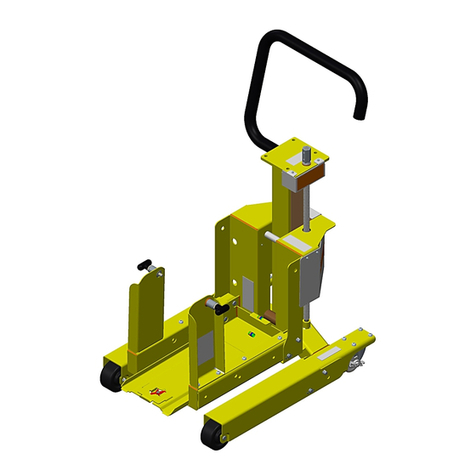
Rockwell Automation
Rockwell Automation Allen-Bradley PowerFlex 750-21G installation instructions

Endress+Hauser
Endress+Hauser Flexdip CYH112 operating instructions
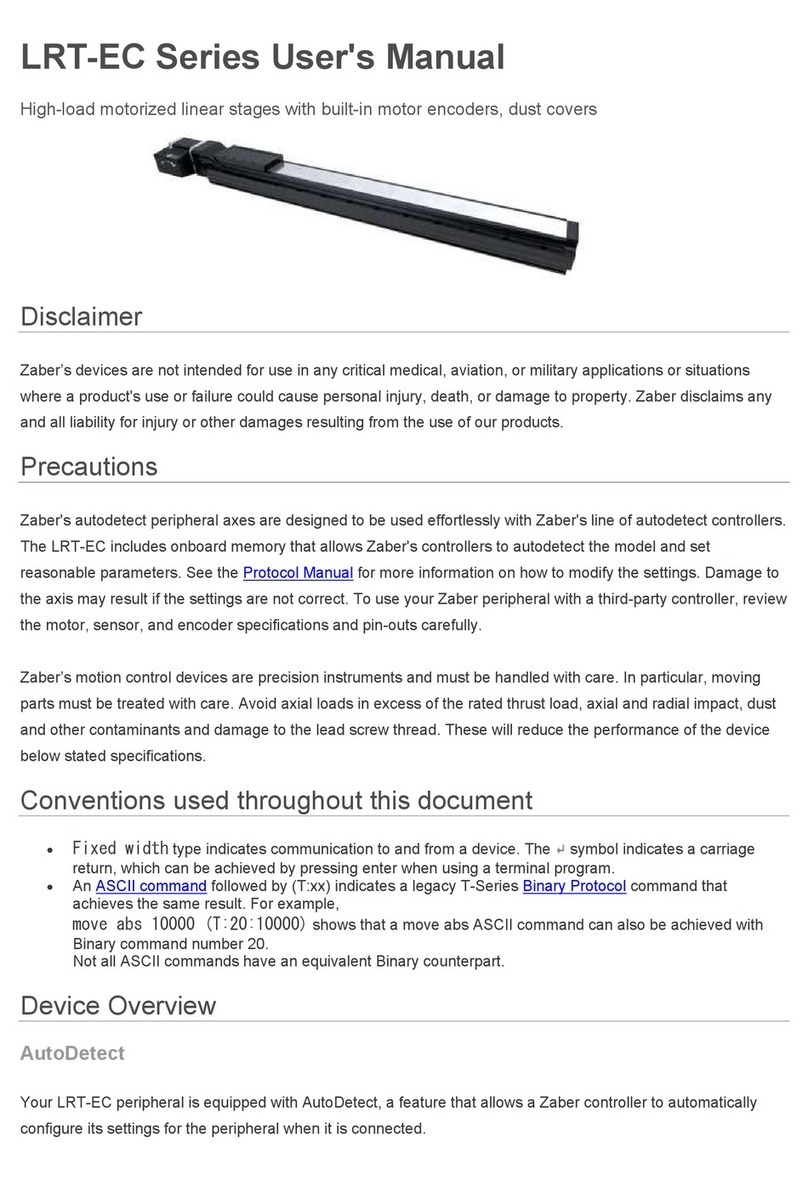
Zaber
Zaber LRT-EC Series user manual
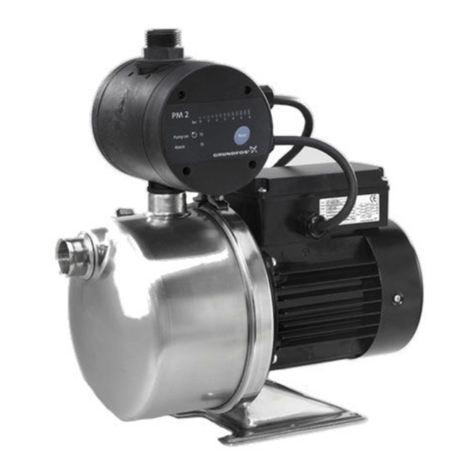
Grundfos
Grundfos CMB-SP Booster PM2 installation instruction and operating instructions
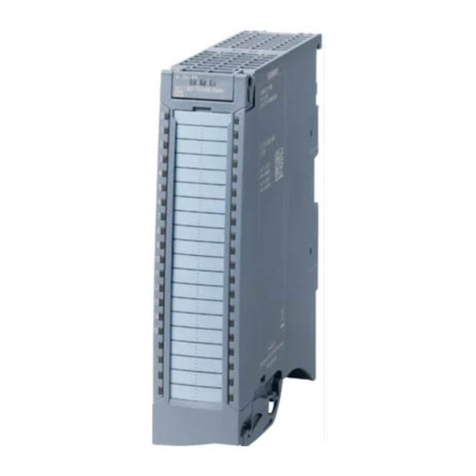
Siemens
Siemens Simatic S7-1500/ET 200MP System manual
